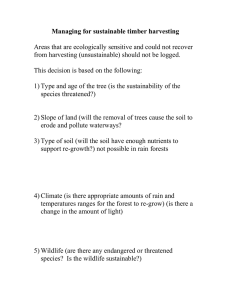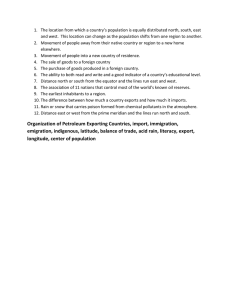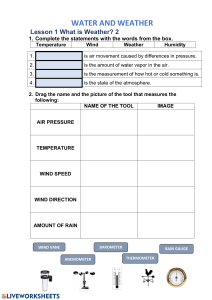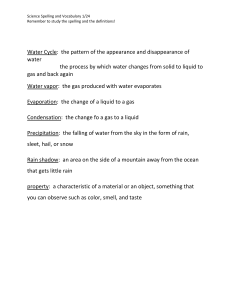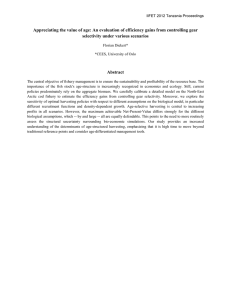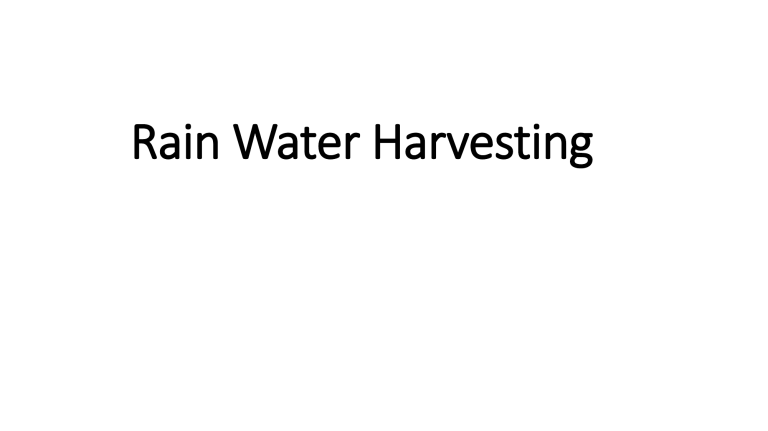
Rain Water Harvesting Introduction • It is type of Harvesting • It can be defined as the system of collection and concentration of rain water and its run off and its productive use for:(a) Irrigation of annual crops, pastures and tress (b) Domestic and livestock consumption (c) Groundwater Recharge Need for Rain Water Harvesting • Major part of our Country have been facing continuous failure of monsoon and deficit of rainfall over the last few years. • Also, due to ever increasing population of India , the use of ground water has increased drastically leading to constant depletion of ground water level causing the wells and tube wells to dry up. • In some places, excessive heat waves during summer, creates situation similar to drought. Objectives • Improve living conditions • Substitute ground water • Reduce flood risk • Reduce soil Erosion • Recharge ground Water Ways of doing Rain Water Harvesting • Directly from roof taps and stored in tanks. • Monsoon run offs and water in swollen streams during the monsoon and storing it in underground tanks. • Water from flooded rivers can be stored in small ponds. • Collection and transfer of rainwater into percolation tanks so as to facilitate discharge into ground. Models of Rain Water Harvesting There are two main Models of Rain water harvesting done in India:(1) Rural Model (Includes Traditional Methods) (2) Urban Model (Includes Modern Methods) Rural Model • Rural areas use generally traditional models of rain water harvesting • Main motive in these areas is to facilitate irrigation for agriculture and use of water for domestic and drinking purposes. • Nowadays, practices are also been followed to as to recharge groundwater levels. • Many of the traditional structures includes Tankas, kunds, khadins etc. Kunds :- Covered underground tank, developed primarily for tackling drinking water problems. Urban Model • More modernized system of Rain Water harvesting • The main components of urban model are:(a) Roof catchment (b) Gutters (c) Down pipe (d) First flush pipe (e) Filter unit (f) Storage tank (g) Collection pit Fig:- schematic view of urban model of Rain water harvesting. Fig:- Components of rain water harvesting. Advantages • Rain water harvesting provides a good supplement to other water resourses thus relieving pressure on other water resourses. • It can supply as buffer and can be used in times of emergency or breakdown of public water supply system. • Helps to reduce flooding in cities. • It is flexible technology and can be built to require needs of any range. Disadvantages • In terms of complex construction, there is a requirement for high cost and trained professionals. • Maintenance costs many add to the monetary burden. • If not maintained properly then, it can cause various problems in terms of algal or bacterial growth. • Tanks not constructed properly might result in leakages and metal tanks may also lead to problems such as corrosion thus harming the water quality. Conclusion • Rain water harvesting systems serve as an alternative decentralized water resource system. • Especially, in the age when ground water supplies are depleting and municipal water infrastructures are facing high replacement cost, RWH system is better alternative. • In many drought affected areas, RWH can be huge beneficial for people. • Though simple, these systems are site specific and can be extremely useful. !! Thank you !!
